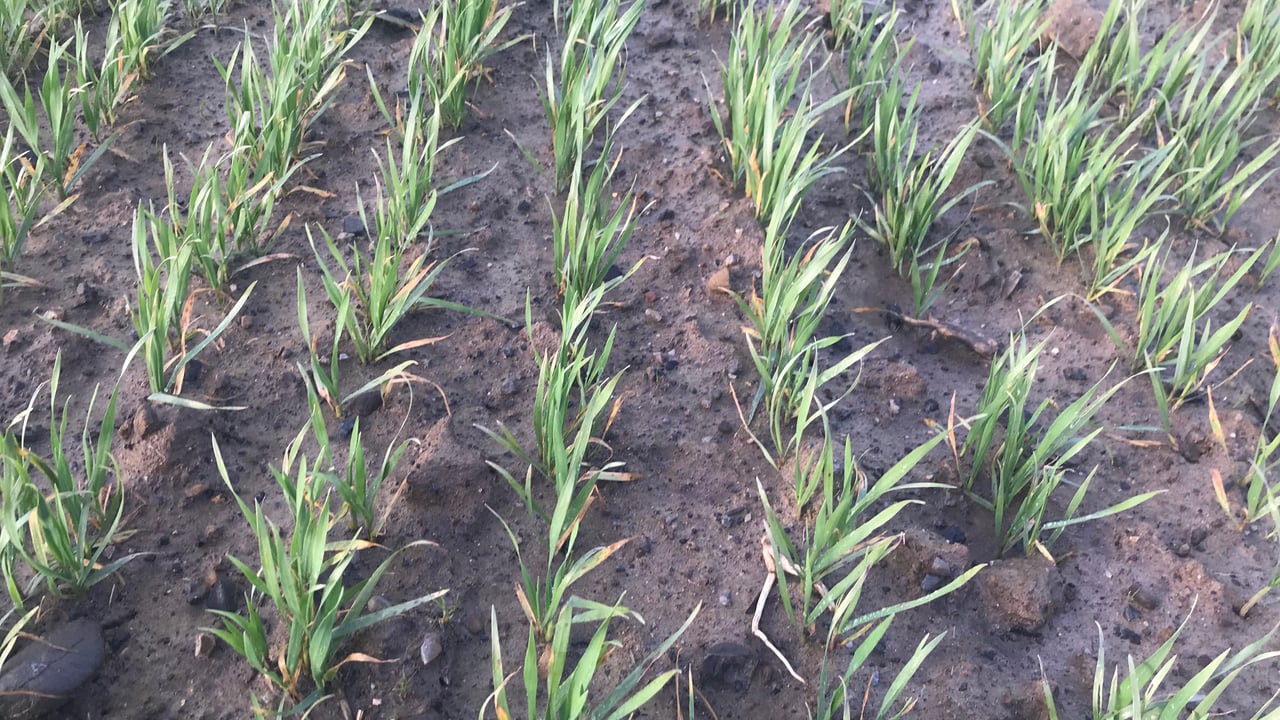Teagasc says some cereal crops showing resistance to BYDV
This week Teagasc hosted its latest tillage webinar, which included a growth update on cereal crops, including winter barley, winter wheat and winter oats and resitance to BYDV in some areas.
Teagasc crops specialist, Ciaran Collins reported that quite a number of winter barley crops in the east Cork area had reached the awn emergence stage.
Specific reference was made to a crop of Joyau, sown out on October 8, 2020. The variety shows some resistance to Barley Yellow Dwarf Virus (BYDV).
Ciaran commented:
“The crop came under attack from Rynchosporium around Growth Stage 30. However, the dry weather slowed down the rate of infection at that time.
Ciaran confirmed that the crop would receive its final fungicide spray, coinciding with awn emergence.
“It got a growth regulator at Growth Stage 30. The plan was to follow this up with a second growth regulator treatment at around the flag leaf stage," he said.
“This didn’t happen as the crop was under a bit of stress at the time, frost being one of the contributory factors. However, the crop has a good resistance to lodging.”
Mark Trimble reported from Kildalton College, where he was inspecting a crop of Infinity winter barley, currently at the flag leaf emergence stage.
“The crop is under a bit of pressure following the recent application of a growth regulator; it would benefit greatly from a spell of milder weather. However, disease pressure is low, it’s a clean crop," he said.
“It will get a further spray at awn emergence, comprising Folpet and Ceriax," he added.
Given the very wide range in growth stages achieved by winter barley crops across Ireland over recent weeks, Teagasc tillage advisors are encouraging cereal growers to walk their crops.
This is to ascertain when is the best time to apply a second growth regulator and final fungicide spray.
Turning to winter oats, tillage advisor Elaine Clifford reported on the progress made by crops in the east Cork area.
She made specific reference to a crop of Husky, sown out on November 5 last.
“The crop has received its weed spray. It was also treated with a growth regulator at Growth Stage 30," she explained.
Elaine went on to confirm that the crop will shortly gets its first fungicide treatment (Elatus Era) plus a second growth regulator. Generally in east Cork, winter oat crops are fairly clean at the moment.
Advisor Conor Cavanagh reported on winter oat crops at Kildalton College that had reached the flag leaf emergence stage. He confirmed that the crop had remained excessively clean throughout the season.
“The crop received its T2 fungicide application a few days ago. The mix comprised Rubric, Comet and Talius," he said.
Teagasc trials have confirmed that the best time to apply growth regulator to winter oats is when crops have reached Growth Stage 32.
Final fungicide sprays on winter oats crops should be applied when the ear has half emerged, predicted this year to be around the middle of May.
John Pettit provided an update on the progress of winter wheat crops at Johnstown Castle. Specifically referencing a crop of Graham, drilled on October 8 last, he said:
“It follows a crop of winter oats on a continuous tillage site. The wheat received a pre-emergent herbicide mix. In mid-April it was treated with a growth regulator.
Teagasc advisors are confirming moderate to low disease pressures in wheat crops in the south of the country. However, rust was identified in crops grown in Co. Dublin quite early in the season.
Full flag leaf emergence for wheat crops in east Cork is predicted for the middle of May.





